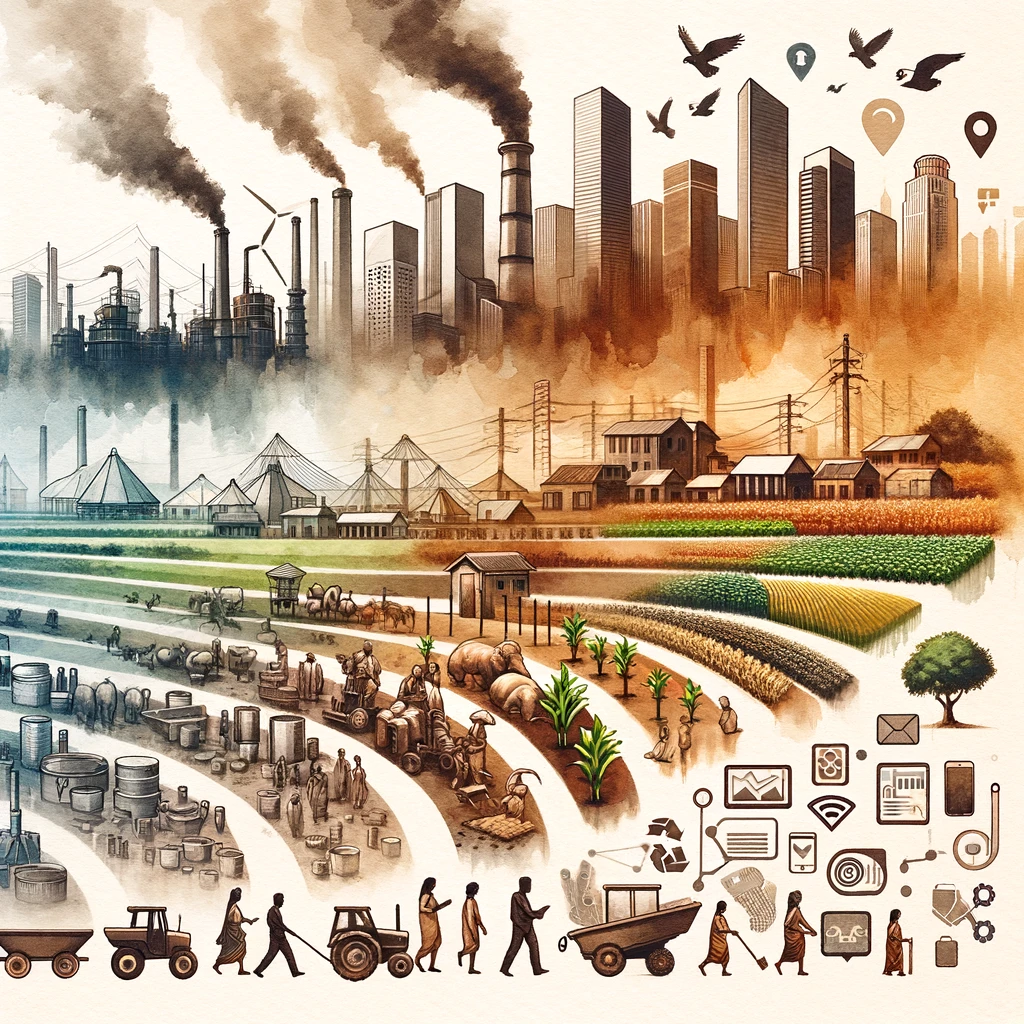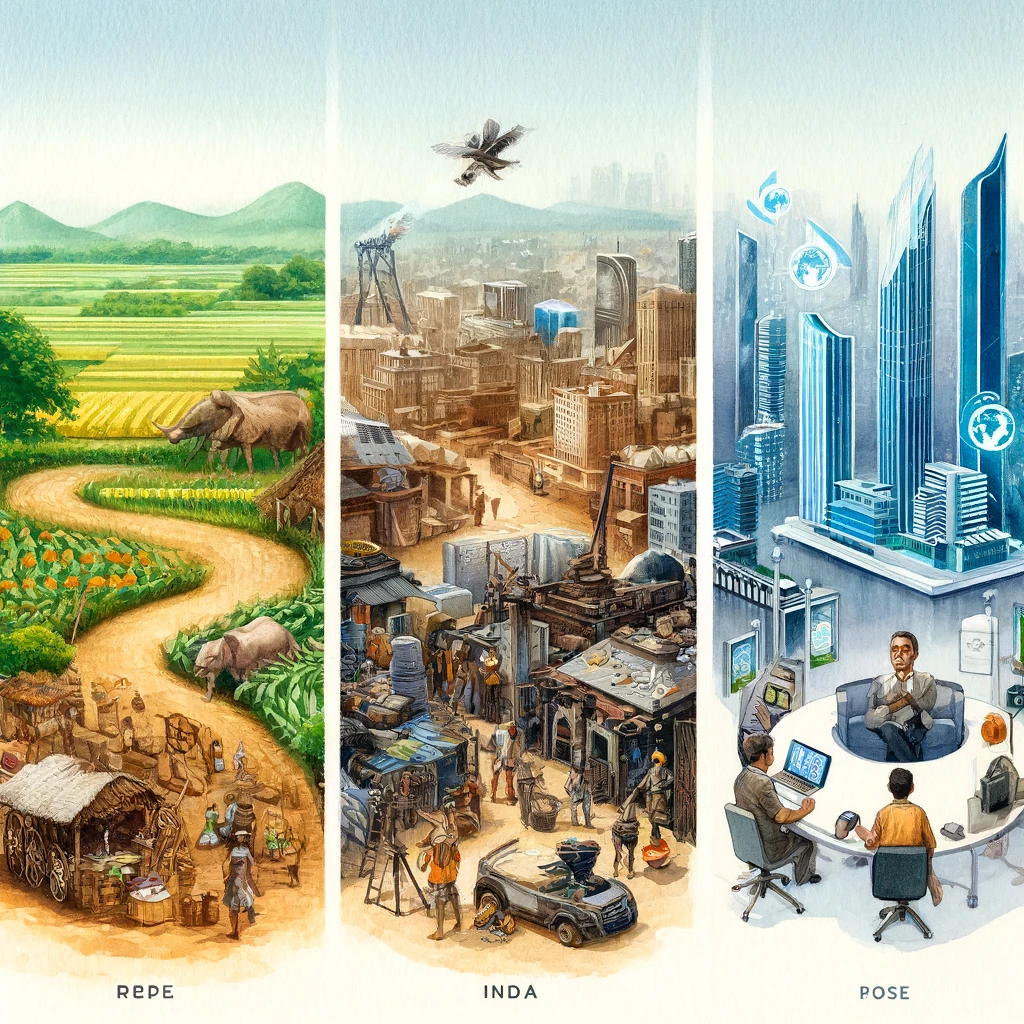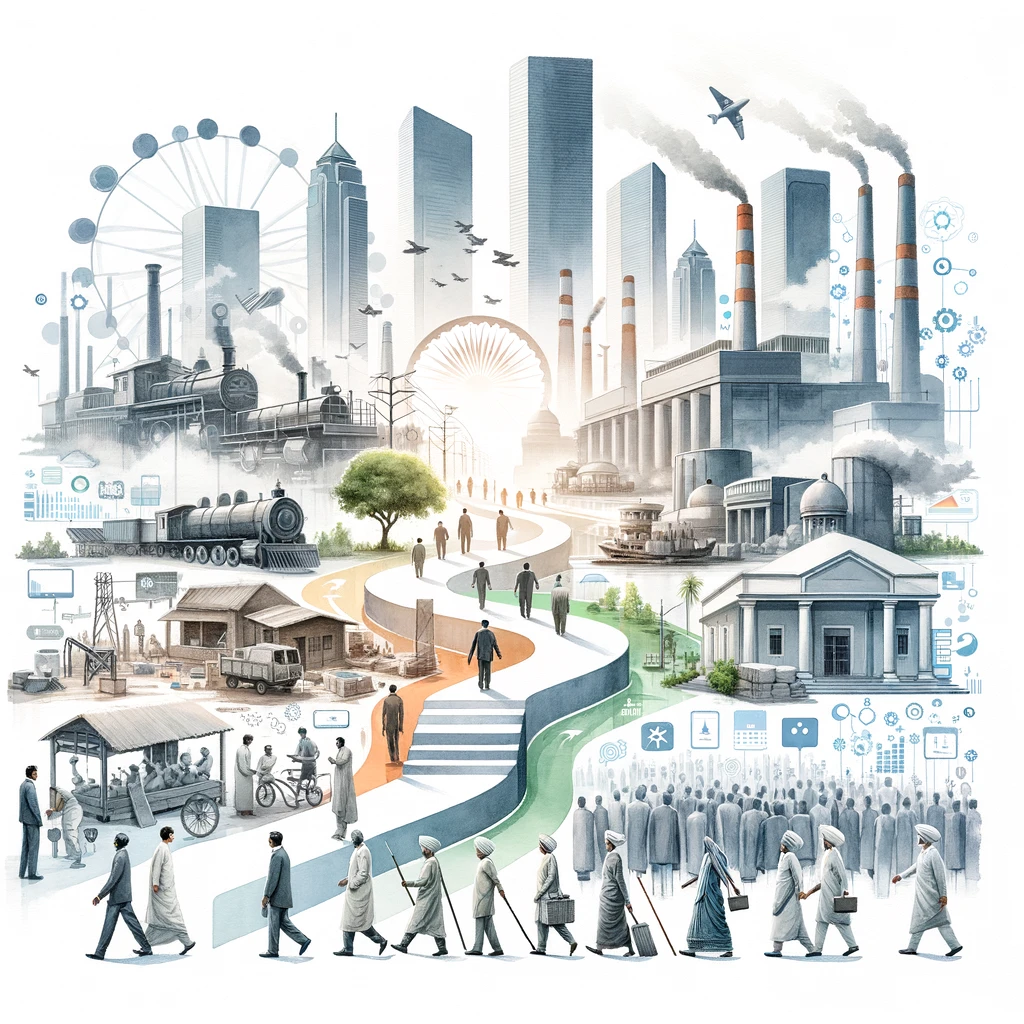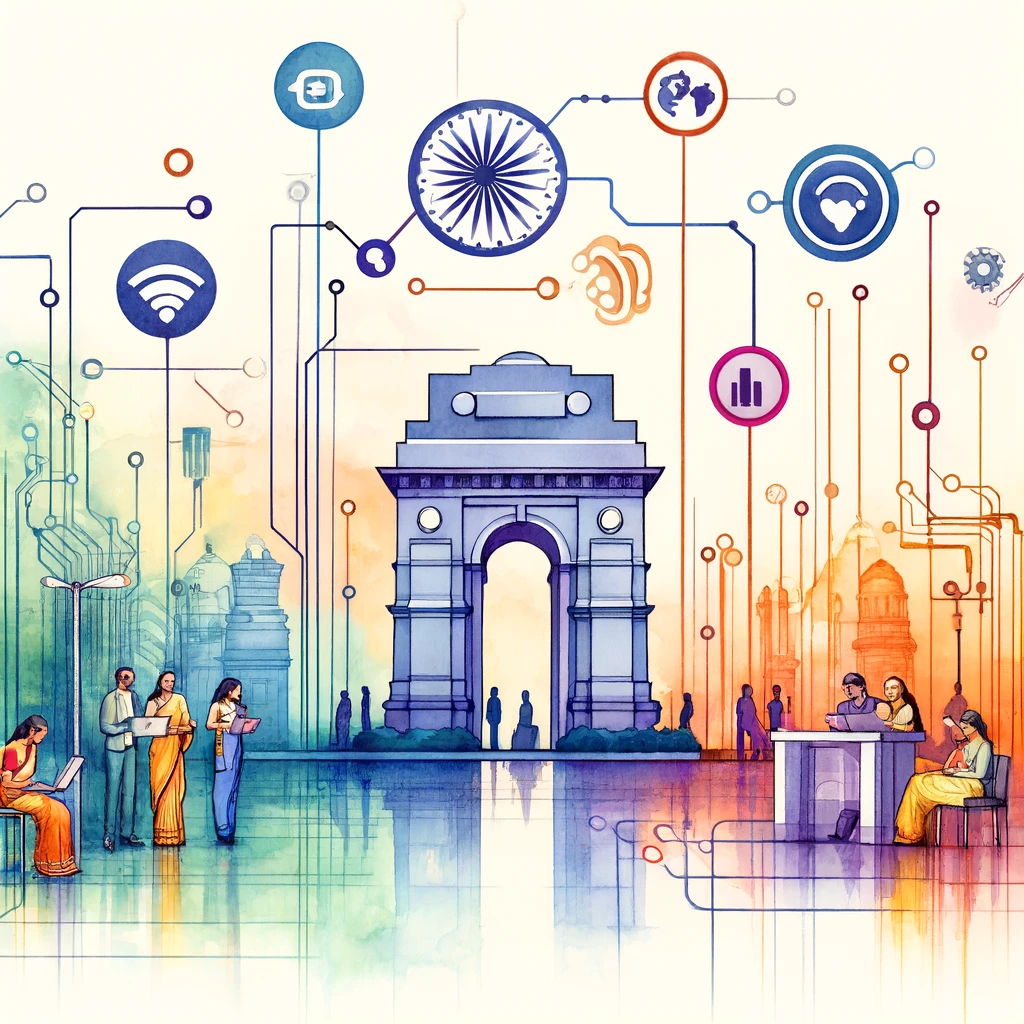Overview of Economic Growth Post-Independence
Brief History of India’s Economic Growth Trajectory Since 1947
Post-independence, India inherited a stagnating economy marked by colonial exploitation, widespread poverty, and insufficient infrastructure. The nascent nation embarked on a path of planned economic development, aiming to establish a self-reliant and diversified economy. The adoption of a mixed economy model, with a significant role for the public sector, characterized India’s early economic strategy.

Key Milestones and Turning Points in Economic Growth
- 1951-1965: The introduction of Five-Year Plans marked the beginning of planned economic development. The focus was on building heavy industries, infrastructure, and achieving self-sufficiency in food production. The Green Revolution in the late 1960s significantly boosted agricultural productivity.
- 1966-1980: Economic growth during this period was hampered by political instability, wars, and oil shocks. However, the establishment of institutions like the Industrial Development Bank of India (IDBI) and the Industrial Finance Corporation of India (IFCI) aimed to support industrial growth.
- 1980s: A modest shift towards liberalization began with deregulation measures and promotion of private sector participation. The introduction of policies aimed at increasing efficiency and competitiveness marked a critical transition.
Transition from a Mixed Economy to a More Liberalized Economy
By the late 1980s, the inefficiencies of the state-controlled economy became evident, leading to a significant balance of payments crisis in 1991. This crisis catalyzed a shift towards economic liberalization, deregulation, and globalization.
Key Phases of Economic Growth: Pre-Liberalization, Liberalization, and Post-Liberalization

Economic Policies and Strategies During the Pre-Liberalization Era (1947-1991)
The pre-liberalization era was characterized by:
- State-led Industrialization: Heavy emphasis on public sector enterprises, with industries like steel, mining, and energy under government control.
- License Raj: Extensive regulation and licensing requirements for private sector activities.
- Protectionism: High tariffs and import substitution policies to protect domestic industries.
Liberalization Policies Introduced in 1991 and Their Immediate Effects
The economic liberalization in 1991, led by then Finance Minister Dr. Manmohan Singh, introduced several critical reforms:
- Deregulation: Reduction of industrial licensing requirements and dismantling of the License Raj.
- Trade Liberalization: Reduction in tariffs, removal of import restrictions, and encouragement of exports.
- Financial Sector Reforms: Privatization of state-owned enterprises and the opening up of sectors to foreign direct investment (FDI).
Immediate Effects:
- Economic Revival: Rapid recovery from the balance of payments crisis.
- Increased Investments: Surge in domestic and foreign investments.
- Growth Acceleration: GDP growth rate increased significantly, averaging around 6-7% in the subsequent years.
Economic Developments in the Post-Liberalization Period
The post-liberalization period witnessed significant economic transformations:
- Globalization: Integration with the global economy, marked by increased trade and investment flows.
- Technology and Innovation: Growth in information technology (IT) and service sectors, making India a global IT hub.
- Infrastructure Development: Significant investments in infrastructure, including highways, ports, and airports.

Factors Driving Economic Growth in India
Demographics, Technology, and Investments
- Demographics: A young and growing population provides a vast labor force and consumer base.
- Technology: Advances in technology, particularly in IT and telecommunications, have driven productivity and efficiency.
- Investments: Both domestic and foreign investments have played a crucial role in economic growth, fostering industrial and service sector expansion.
Role of Domestic and Foreign Investments
- Domestic Investments: Growth in private sector investments has spurred industrialization and infrastructure development.
- Foreign Investments: FDI has brought in capital, technology, and expertise, contributing to economic modernization and job creation.
Impact of Policy Reforms on Economic Growth
Policy reforms, particularly in the areas of deregulation, trade liberalization, and financial sector reforms, have created a conducive environment for economic growth. These reforms have improved efficiency, competitiveness, and integration with the global economy.
Challenges in Sustaining Economic Growth
Infrastructure, Regulatory Hurdles, and Social Inequalities
- Infrastructure: Inadequate infrastructure, particularly in transportation, energy, and urban facilities, poses a significant challenge.
- Regulatory Hurdles: Complex regulations and bureaucratic red tape continue to hinder business operations and investments.
- Social Inequalities: Disparities in income, education, and healthcare access remain persistent, impacting inclusive growth.
Impact of External Factors Like Global Economic Conditions
Global economic conditions, such as financial crises, trade wars, and geopolitical tensions, can adversely affect India’s economic growth. Dependence on global markets for trade and investments makes India vulnerable to external shocks.
Measures to Overcome These Challenges
- Infrastructure Development: Increased investments in infrastructure, focusing on sustainable and resilient projects.
- Regulatory Reforms: Simplification of regulatory frameworks to enhance ease of doing business.
- Inclusive Growth Policies: Implementing social policies aimed at reducing inequalities and improving access to education, healthcare, and employment.
Role of Government Policies in Shaping Growth Trends
Various Government Policies Impacting Economic Growth
- Industrial Policies: Initiatives like ‘Make in India’ aim to boost manufacturing and create jobs.
- Digital India: Promotes digital infrastructure and digital literacy.
- Skill India: Focuses on vocational training and skill development to enhance employability.
Effectiveness of These Policies
These policies have had mixed outcomes:
- Successes: Significant growth in sectors like IT, manufacturing, and digital services.
- Challenges: Implementation issues, regulatory bottlenecks, and inadequate infrastructure have limited the full potential of these policies.
Recommendations for Future Policy Directions
- Focus on Innovation: Encourage innovation and research & development (R&D) through incentives and support mechanisms.
- Sustainable Development: Integrate sustainability into economic planning, ensuring long-term growth without environmental degradation.
- Strengthening Institutions: Enhance the capacity and efficiency of institutions responsible for implementing and monitoring economic policies.
By addressing these areas, India can sustain and enhance its economic growth trajectory, ensuring broad-based development and prosperity for all its citizens.

